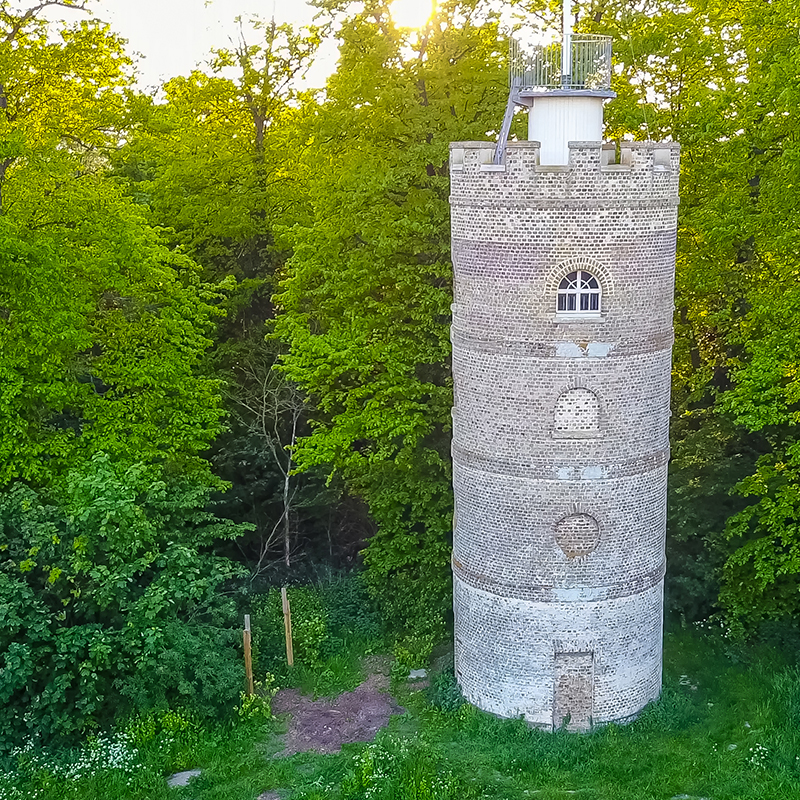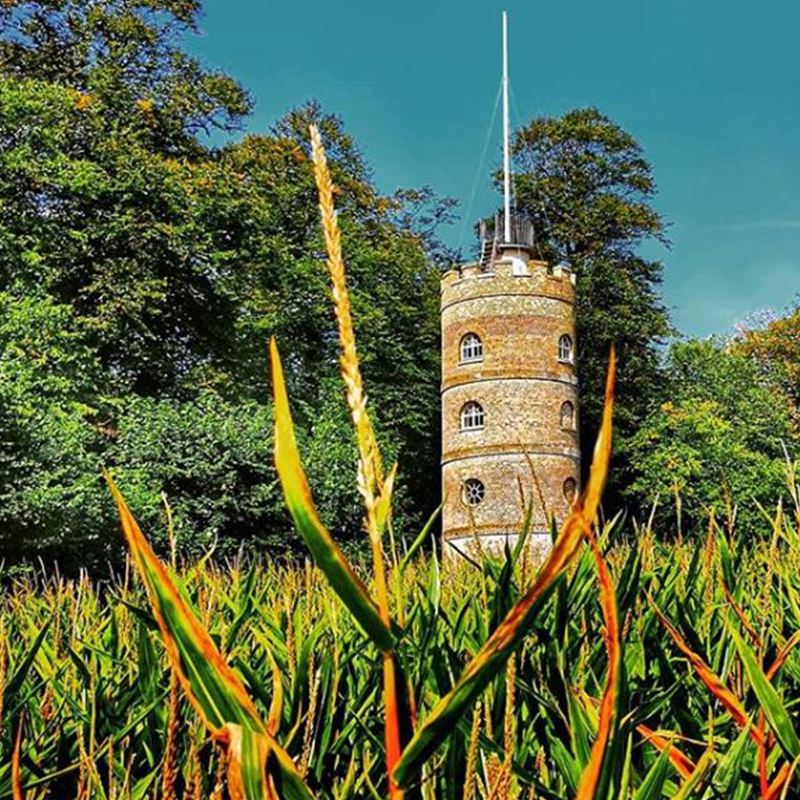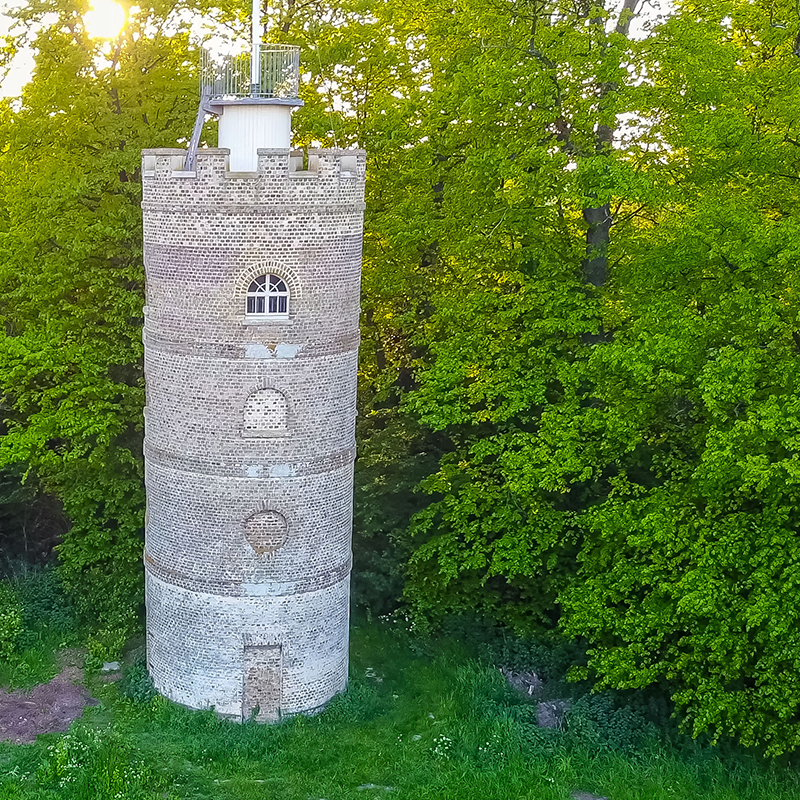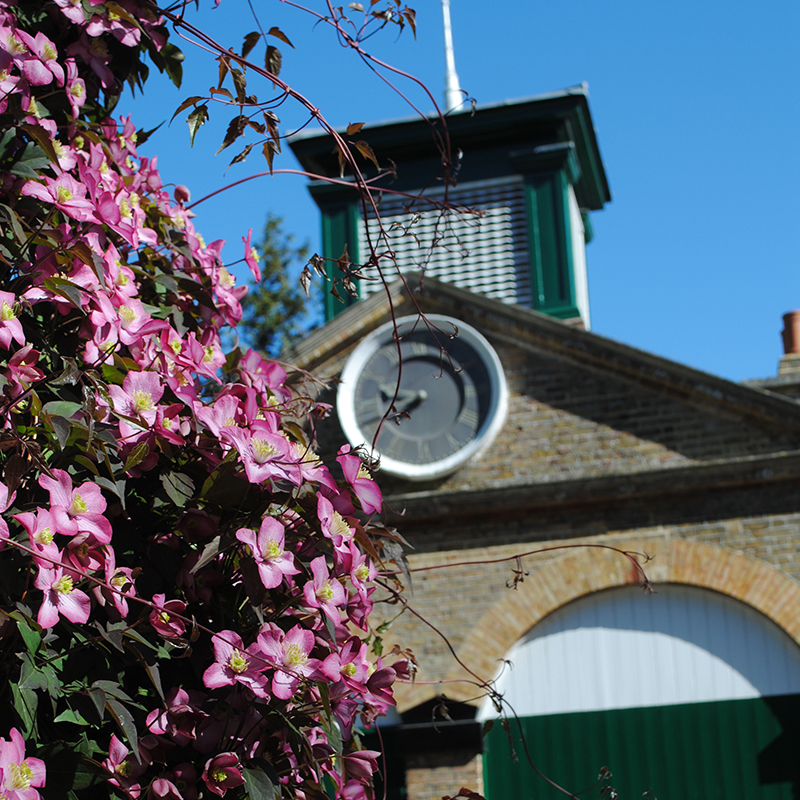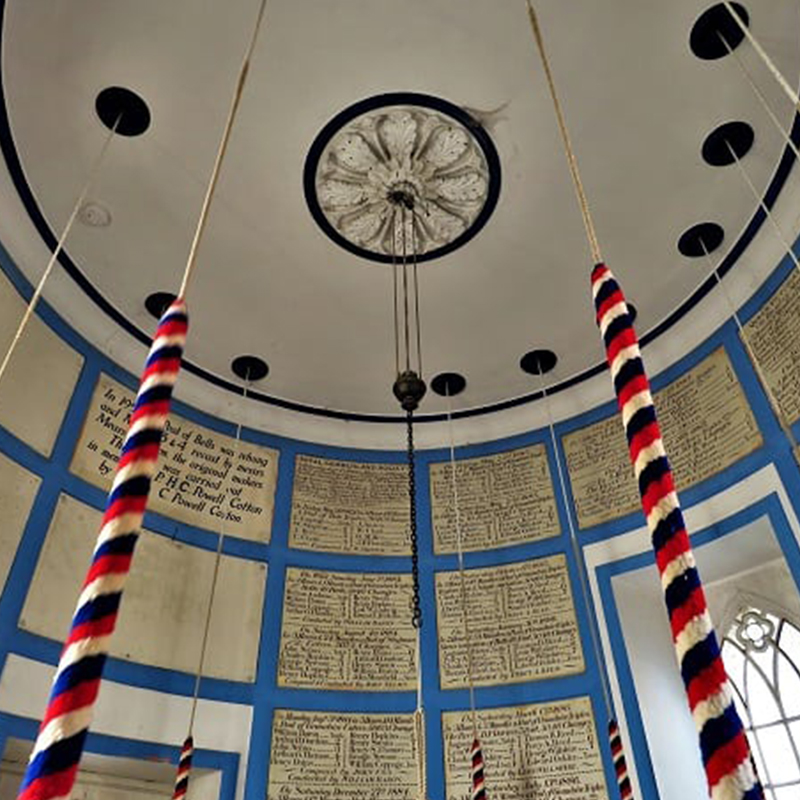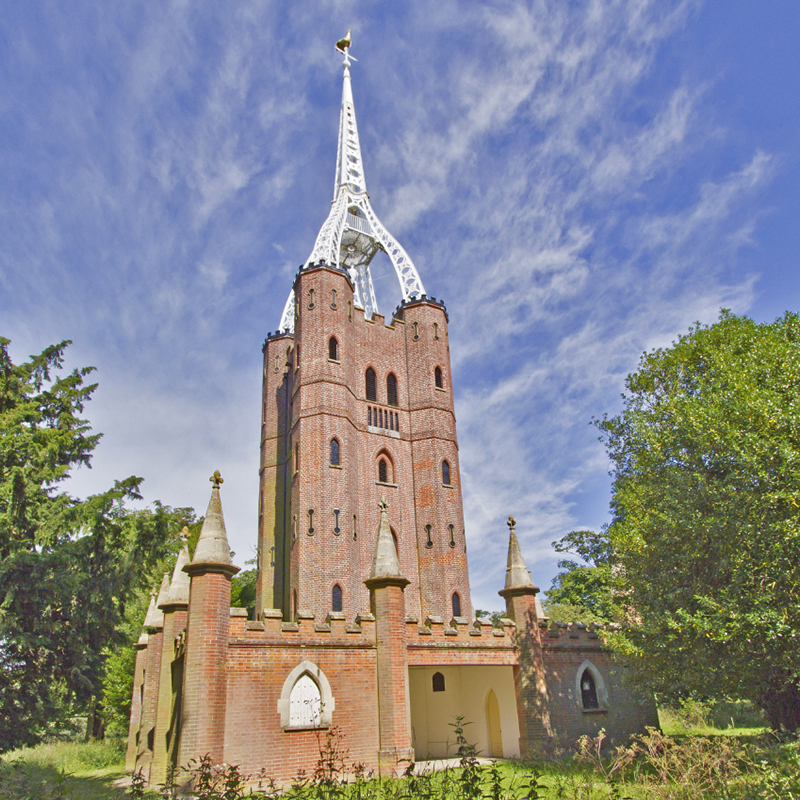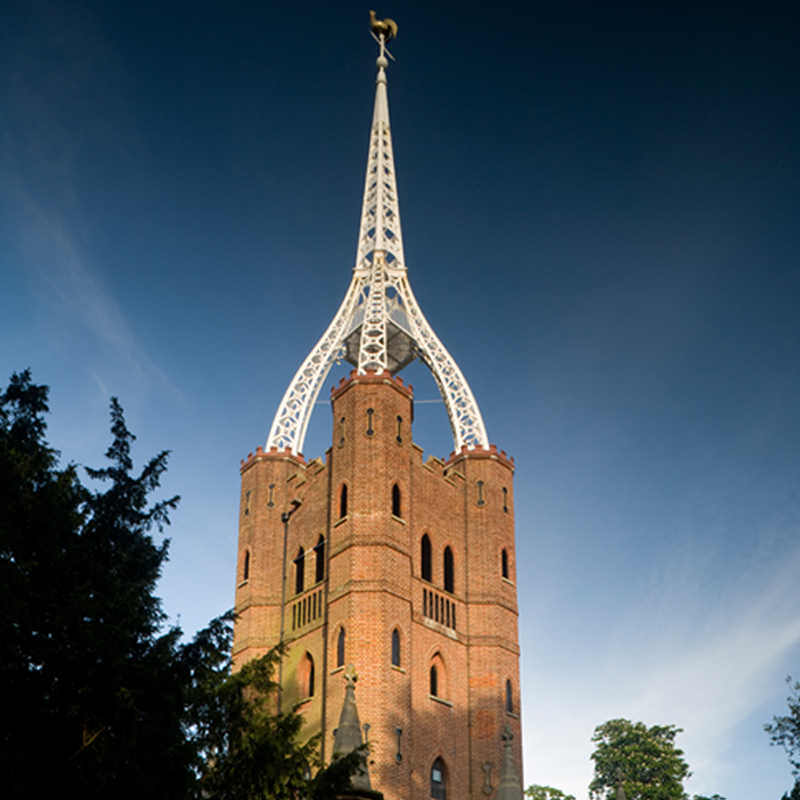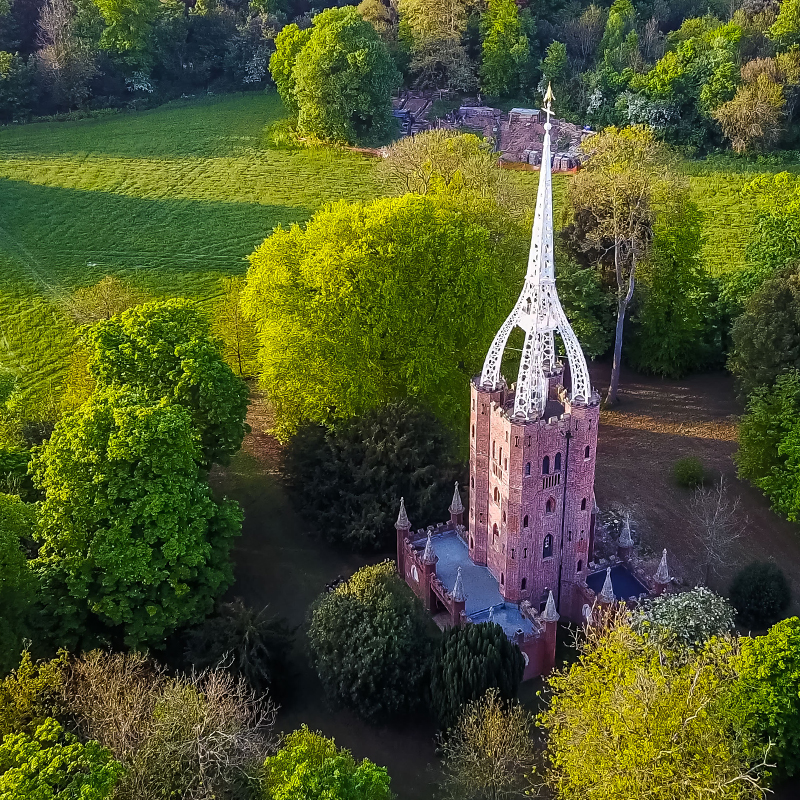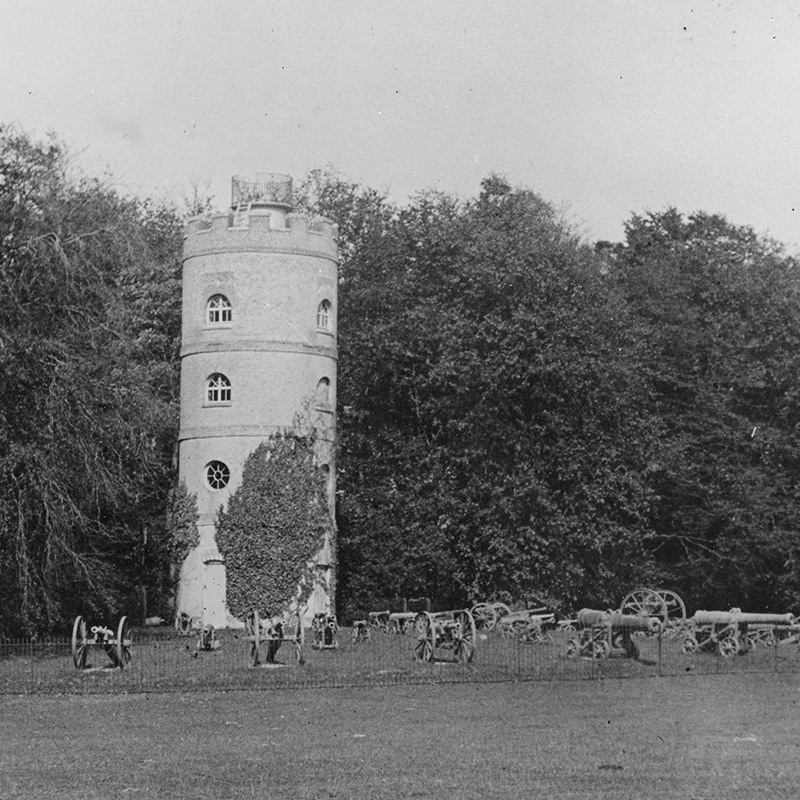
As a keen yachtsman & early member of the Yacht Club at Cowes, John Powell Powell commissioned the construction of this tower in 1814 for observation and Semaphore flag signalling.
The Round Tower stands over 40 ft tall with a wooden winding staircase, taking you up four floors to the flagpole at the top.
The Round Tower is associated with the story of the White Lady, the ghost of Quex.
Legend has it that she was the wife of an ancient British warrior buried beneath the mound on which the tower is built.
The trees alongside the roadway are where she is reported to be seen.
